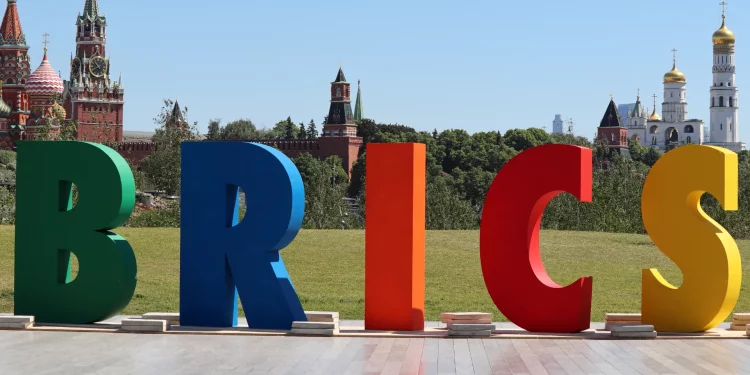Saudi Arabia and the United Arab Emirates (UAE) have officially joined BRICS from Jan 1, 2024. Besides the two biggest Arab nations, three more countries from the larger Middle East and North Africa (MENA) region have also become members since the start of the year. They are Egypt, Ethiopia, and Iran.
These new entrants have doubled the size of the economic bloc to 10, with Brazil, Russia, India, China, and South Africa as founding members. Argentina was also formally invited to join but recently announced declining the offer.
The expansion of the multilateral bloc by Saudi Arabia and UAE comes at a time of ongoing geopolitical and economic turmoil in the global economy. Saudi Arabia entered the bloc during an economic war between the United States and China and the growing influence of Beijing in the Kingdom.
The US and Saudi Arabia have had historically strong ties, but the Kingdom is carving out its path due to the concerns that the White House is least interested in securing the Gulf region in the recent past.
What’s in it for Saudi Arabia and the UAE?
Ullas Rao, assistant professor at the Edinburgh Business School of Heriot-Watt University in Dubai, said that both the affluent nations are among the top leaders in per capita and home to the world’s biggest sovereign funds, which could create infinite growth opportunities through investments, trade, and commerce.
The new members of BRICS will have access to new economic alternatives and diversification benefits, which will further help in reducing their dependence on crude revenues.
Saudi Arabia and the UAE have recorded economic growth despite the global challenges of higher interest rates, inflation, recession fears, slowed demand, and geopolitical tensions amidst the diversification of their economies.
Saudi Arabia’s economy grew by 8.7% in 2022, outpacing all of the world’s 20 biggest economies, with the highest annual growth rate amongst them. The International Monetary Fund anticipates it to grow further by an additional 0.8% in 2023. The Kingdom is giving utmost importance to the growth of its non-oil economy under its Vision 2030 diversification targets.
The UAE’s economy is expected to grow 3.4% last year, with non-oil GDP growth at 4.5% and oil GDP at 0.7%. It is growing on the robust foundation of its tourism, real estate, construction, transport, manufacturing, and a boost in capital expenditure, as mentioned in a report by the World Bank.
Ayham Kamel, head of Eurasia Group MENA, said that the joining of Saudi Arabia, UAE, Iran, and Egypt in the bloc could create avenues that could change the future trajectory of political cooperation by all these countries.
The United Arab Emirates, the Arab world’s second-largest economy, is signing trade agreements with several countries to strengthen ties. It is signing 26 comprehensive economic partnership agreements (CEPA) to attract more investments into its economy. Under a year after signing Cepa with India, its non-oil trade rose to $50 billion, achieving half its target of $100 billion by 2030.
Gary Dugan, Chief Investment Officer at Dalma Capital, said that BRICS held an image of a financially vulnerable group at the hands of global political powers. The financial prowess of Saudi and the UAE as the net exporters of capital to the world will help change that perception. He added that as a group, Saudi and the UAE will be invited to access business and growth opportunities in the BIRCS nations on mutual agreements.
OPEC+ is a major player in balancing the international oil markets; it comprises the world’s biggest crude producers, including Saudi Arabia, the UAE, and Russia. India and China, two of the BRICS founding members, are the third and second-largest purchasers of oil in the world and enjoy strong energy relations with the Gulf powers. In the future, more bilateral trade in domestic currencies can be seen with the new members.
The UAE and India signed an agreement to construct the framework to facilitate the use of local currencies in overseas transactions and enhance the linking up of payment processes and messaging systems.
Threat to Dollar Hegemony
Rao has said that BRICS holds the power to amass widespread influence and act as a powerful voice to the Global South.
The Gulf nations are also actively working towards improving their geopolitical influence and are weighing every possibility carefully to avoid cutting off from the West.
After the expansion, talks of developing an alternative currency to the US dollar and remodelling the international monetary system started to arise. The world is looking for an alternative currency, and the introduction of a BRICS common currency can bridge the gap by mitigating the risks away from the dollar.


















